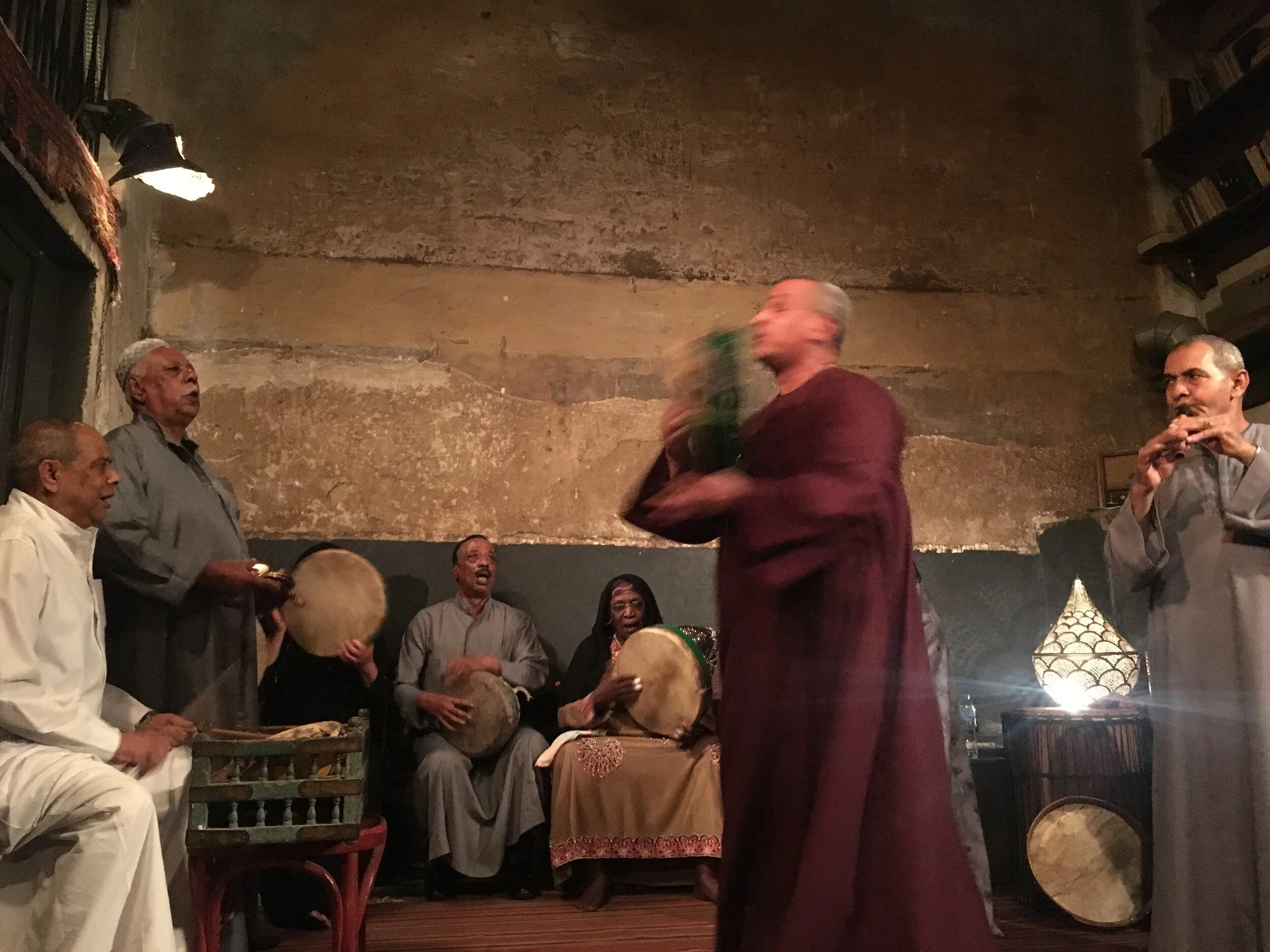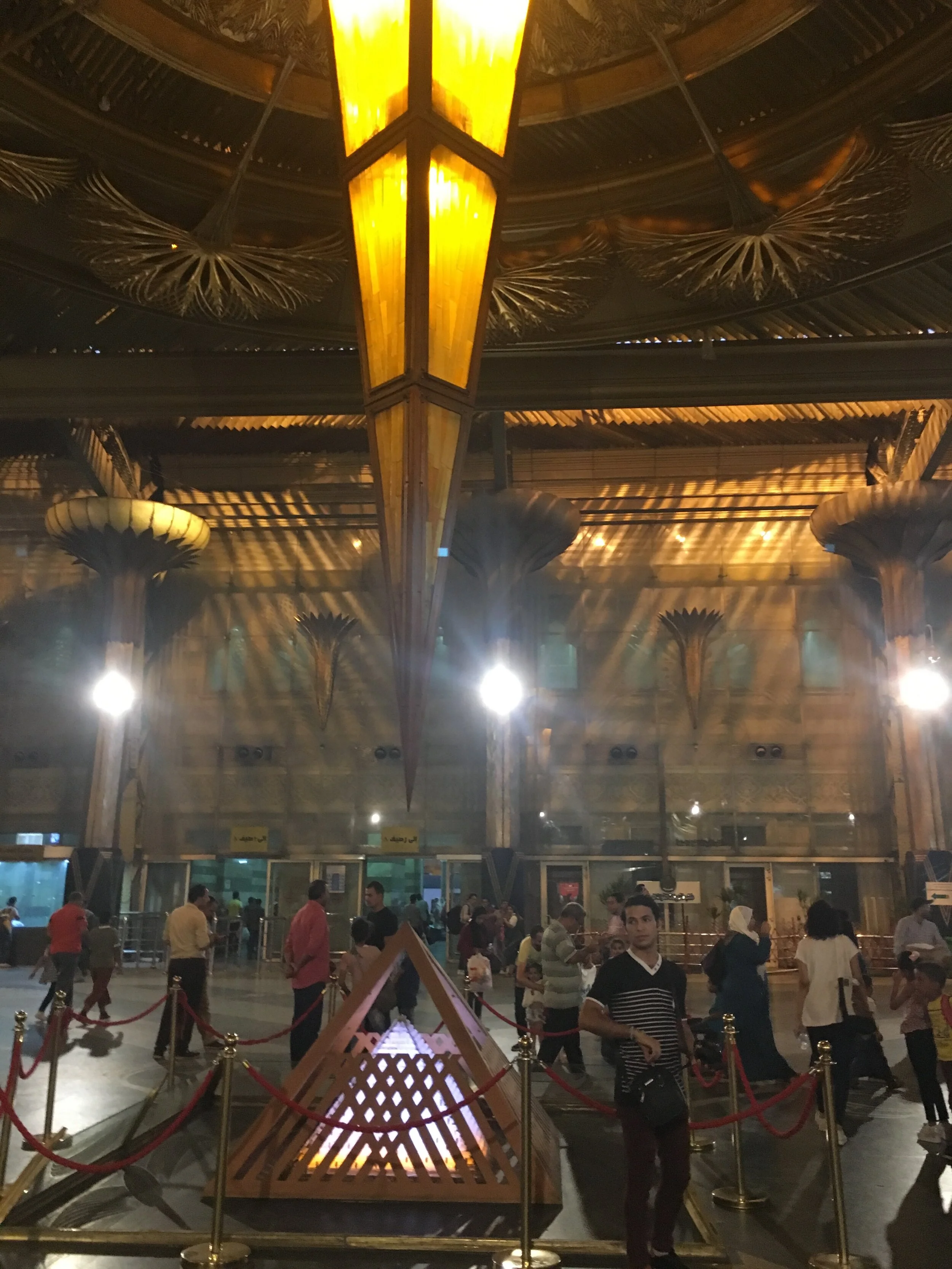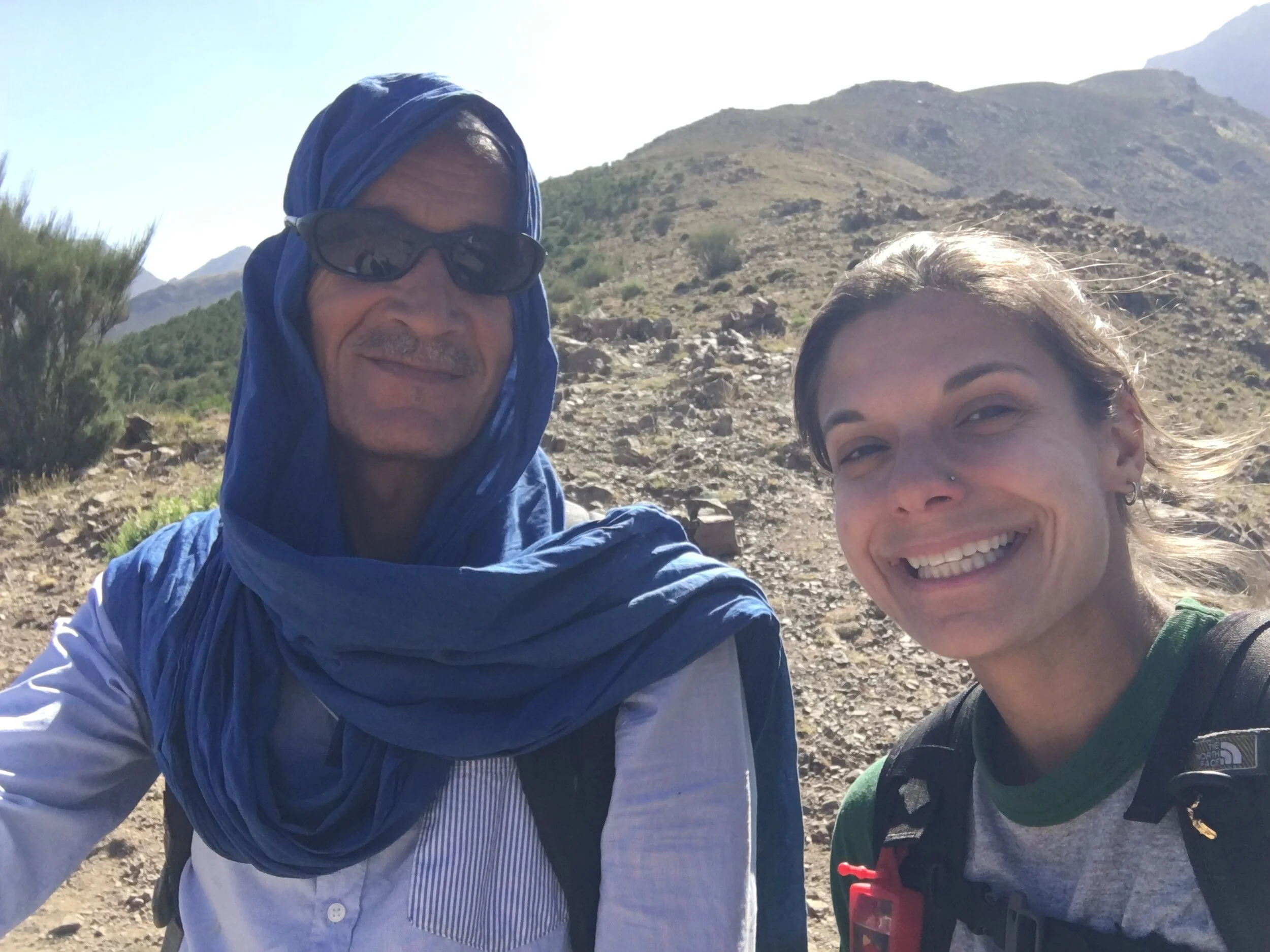Traditional Egyptian Music
The Makan Egyptian Center or Culture and Arts’ mission is to preserve traditional Egyptian music and support musicians financially and with recording opportunities. Every Wednesday in the small theater space the Mazaher Ensemble plays traditional Egyptian Zar music to a full house of about 75 spectators. Traditional Egyptian music is not taught in schools and most of the shows billing themselves as traditional music skew toward folkloric spectacle to match tourists expectations of limited types of performances such as Sufi dancing or belly dancing. Makan wants to preserve traditions faithfully and inspire a new generation of Egyptians to feel proud of their cultural heritage and perhaps learn to perform themselves.
The dancing style included pacing, swinging and rhythmic turning to the ever increasing tempo of the rhythms.
The Mazahar group consists of 4 men and 4 women play mostly percussion instruments: hand drums, tambourines, finger cymbals, bongos, the d’jambe, maracas, and a belt with hundreds of seashells sewn to it. The melody comes from call and response singers, a wooden flute and a string instrument which is part harp, part African Kora.
The music is mesmerizing. Each song starts out slowly with lots of hand drums and tambourines added in. It progressively gets louder and more intense and more cacophonous as the voices merge, the drumming hastens and the dancing brings it all to a head before abruptly ending.
Some of the performers, Um Hassan <Nour el Sabah and Um Sameh are among the last Zar musicians in Egypt.
The women in the group all cover their heads but none of them cover their necks as is commonly seen in Egypt. Two wear tight head covers then a loose, sheer veil over it and the others just cover their hair Senegalese style with a knot at the back of their heads. This is in start contrast to the audience, very few of whom cover their heads at all.
The lead singer is a force to be reckoned with. She has red nail polish and gold rings with large jewels on nearly all her fingers. She’s wearing makeup and necklaces and silver slippers. She doesn’t use a microphone but she doesn’t have to. He gravelly voice carries throughout the theater. She sings in Arabil and speaks in Arabic to interact with the crowd, more than half of whom seem to understand. She starts the show with a blessing and lights incense which she carries around to each of the ensemble members.
Mazar’s music is inspired by 3 different Zar styles: Upper Egyptian Zar, Abu Gheit Zar and the Sudanese or African Zar style.
Black mint tea and hibiscus tea are free for the taking both before the show and during intermission, where the lead singers suggests that we might want to go out for a cigarette. Smoking is ubiquitous in Egypt: on the street, in cars, in buildings, our hotel, restaurants. Mostly it’s the men who smoke, but I’ve passed some shisha bars where women were partaking as well.
Mazhar music features women in the lead role, which is not often the case in traditional Egyptian music. This style of poly-rhythmic music is dying out as practitioners pass on and new musicians don’t rise up to replace them. There was one younger woman in the ensemble, the other 7 appeared to be in their 60s, 70s or older. One woman who sat the entire performance didn’t walk very well. Makan found these practitioners and formed the group. They “Motivated them to go through lengthy session of rehearsing, remembering and recording.”
The woman in red on the left is the youngest in the ensemble of aging artists sharing their music and dance with a multi-national artist every Wednesday night.
I don’t know what the future of Mazhar music will be or if it would still exist without help from organizations like Makan, but I’m glad I paid my 80 Egyptian Pounds (around $5) to experience this music I’d never heard before in a space dedicated to promoting and preserving the arts.









